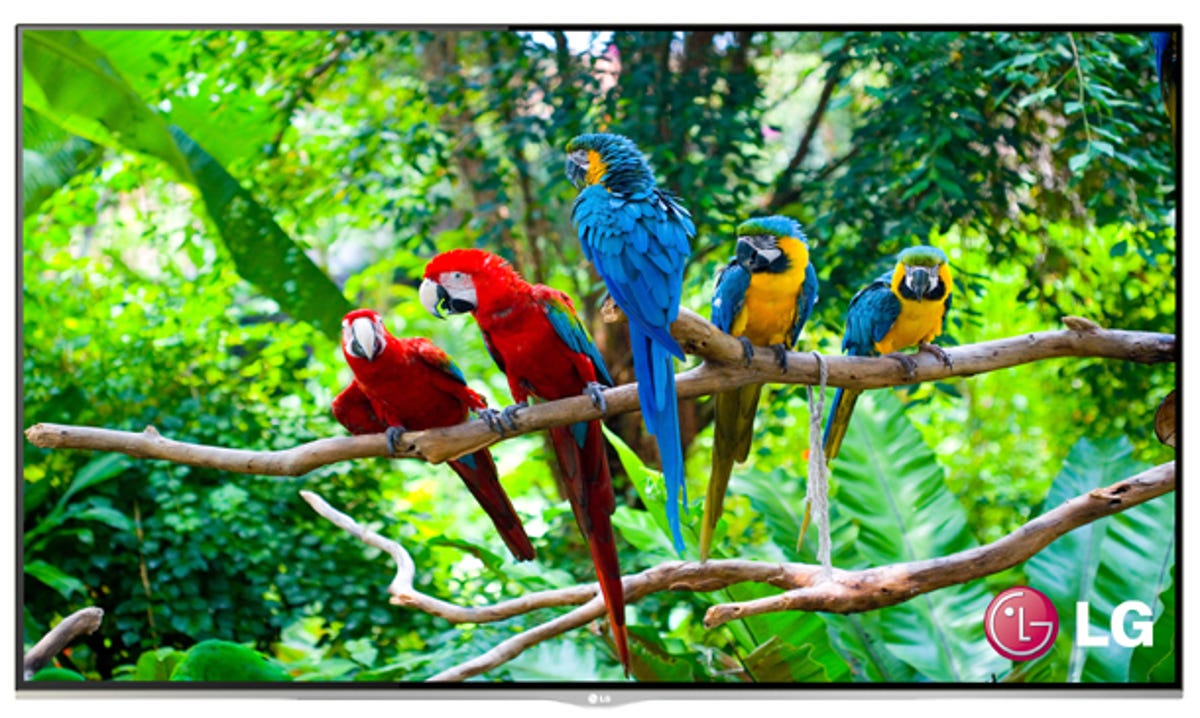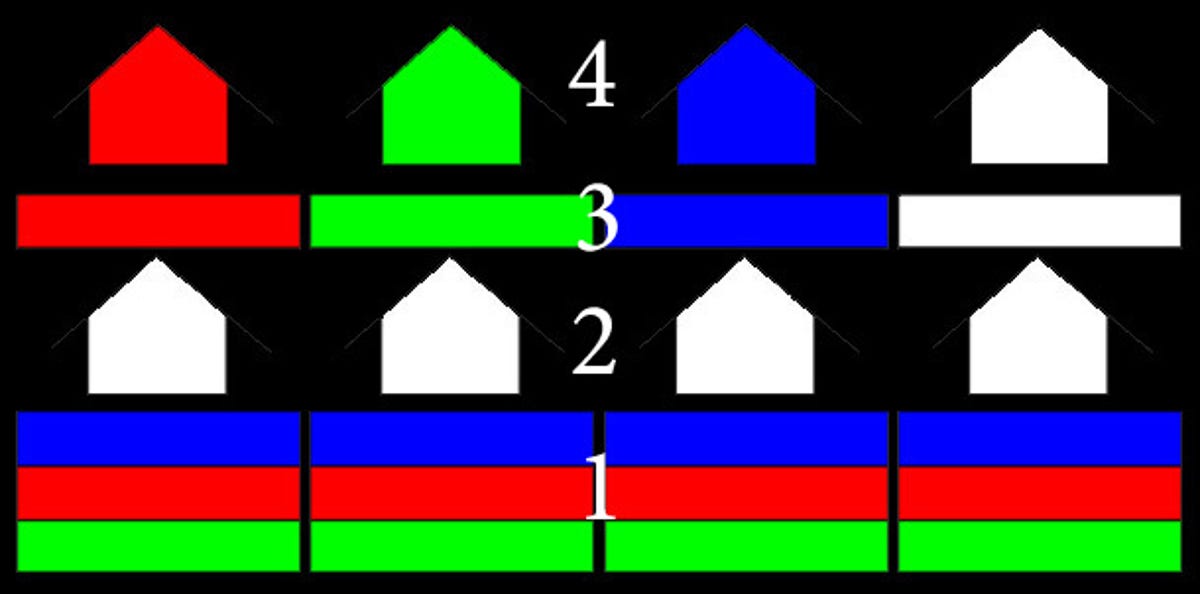
LG
Editors’ note: This post was updated August 15, 2013, with new information.
By now you’ve probably heard about OLED, or organic light-emitting diodes. LG and Samsung both revealed potential models at this year’s CES, with the LG winning CNET’s Best of CES Award.
Make no mistake, this is the most important advancement in TV technology in more than a decade, and a vast improvement over both LCD and plasma.
Here’s why.
The what
You only need red, green, and blue light to create a TV image. OLEDs work by putting electricity through certain materials that glow these specific colors. No other TV technology creates light directly like this. LCDs use color filters and light-blocking liquid crystals above a light-creating backlight. Plasmas use UV light created by igniting pockets of gas to excite red, green, and blue phosphors.
The why
What does this mean? Well, OLED TVs will be thinner, lighter, more efficient, and better-performing than any current television technology. Each pixel can be shut off, for an absolute black (no other tech can do this, save CRT), meaning an actual infinite contrast ratio, not just marketing hype.
For example, LG’s 55-inch OLED unveiled at CES weighs 16.5 pounds and is about as deep as a pencil (3/16 of an inch).
It’s hard not to be excited about OLED, as it ticks all the boxes of a dream television: incredible contrast, impossibly thin, extremely energy efficient.
LED vs. OLED
As we’ve discussed before, current televisions marketed as “LED TVs” aren’t actually LED TVs. They’re LCD TVs that use LEDs for the backlight. While LED LCDs are energy efficient compared with “regular” LCDs and plasmas, they’re still not as energy efficient as OLED. As far as the difference between LEDs and OLEDs, the latter uses materials that include carbon (“organic”) to create light when supplied a current. In an extremely oversimplified and generalized explanation, LEDs are like tiny light bulbs, while OLEDs are light-emitting areas or surfaces.
The only real “LED TV,” as in a TV that used LEDs for the image itself, was Sony’s Crystal LED prototype it showed at CES. If this technology moves past the prototype stage, we’ll report on it more fully.
RGB OLED vs. ‘white’ OLED
The current OLED TV technology can be split in two camps: RGB OLED and “White” OLED. RGB OLED is similar to how plasma TVs work, with separate red, green, and blue OLED subpixels.
White OLED is rather different, and a bit confusing at first. Red, green, and blue OLED materials are sandwiched together. When powered, these create a white light. This white light passes through a color filter, to create the red, green, and blue subpixels.
It looks something like this:


Geoffrey Morrison/CNET
This image above represents one pixel. There are just over 2 million of these on each TV (1,920×1,080). There is an additional white subpixel in the LG design, which adds additional brightness, helping efficiency.
This seems weird, right? I mean, if you’ve got all three colors there already, why make white just to then turn it back into specific color? Well, it turns out White OLED has several benefits. There are some claims that this white sandwich has longer life and less chance of color shift versus separate R, G, and B OLEDs. LG wouldn’t commit to a lifespan claim when I asked it directly, however, saying only that while “long-life testing is still under way, we believe our WOLED will perform quite well vis-»-vis other displays.”
What they did say, and this is very important, is at this stage it’s easier to manufacture. That means “cheaper.” I’m in the camp that anything that gets OLED to market sooner is a good thing.
Lastly, and this could be where White OLED wins out: it’s easier to scale to different screen sizes, which means bigger (or smaller) OLED TVs sooner. That also means it’s easier to scale to 4K resolutions. I’m on record saying 4K TVs are stupid, but I admit it’s inevitable.
I know some of you are thinking: “Blech, color filters!” What kind of LCD-esque step back is this horror hybrid? At first, I was in this camp as well, but the more I’ve researched, White OLED offers a lot of advantages, separate from the “pure performance” aspect. Could RGB OLED be slightly more efficient, or have slightly better performance? Maybe, but at this stage, it doesn’t matter. If White is easier to make, that’s the road we’re on.
Related stories
- LED LCD vs. plasma vs. LCD
- Why all HDMI cables are the same
- Is plasma HDTV burn-in a problem?
- Is LCD and LED LCD HDTV uniformity a problem?
- Active 3D vs. passive 3D: What’s better?
- 4K vs OLED
OLED needs to come to market before we can argue the potential benefits of one version of the technology over another. OLED, regardless of the specific flavor, is going to perform better, and be more energy efficient than any current television.
Inevitably, future versions of this technology will perform better. We can fixate on that pixel when we come to it.
AMOLED vs. OLED
Cell phones and other small portable devices often specify that their screens are “AMOLED” instead of just “OLED.” The “AM” stands for “active matrix,” which is how the screen is addressed by the electronics of the device. It is just a different way of running an OLED screen, one that’s better for motion (like video). Each pixel can be addressed individually, which is what you want in a television.
Those of you with long memories will remember the days when LCD monitors were called TFT LCD or active-matrix LCD. You hardly ever see that clarification because every LCD you’re now likely to come in contact with (either phones, tablets, TVs, etc.) is active matrix. Same idea here. OLED TVs will be some kind of active matrix.
The when
Like any new technology, OLED TVs will be expensive at first. LG’s 55EA9800 is $14,999. Samsung’s KN55S9C is $8,999. Don’t forget it wasn’t too long ago that big-screen LCDs and plasma were well beyond the means of us mere mortals. Let the 1-percenters buy these first-generation panels, driving down the cost for the rest of us. Within a few years of launch, expect to see OLEDs as a significant, but reasonable, step up over LED LCDs and plasmas.
In the meantime, you can check out what OLED looks like now.
In the future, OLED has few limitations on size or resolution. Wall-size OLED screens have been hypothesized. Flexible OLED, still many years off, fulfills the sci-fi promise of screens you can roll up like a magazine.
Excited yet?
Got a question for Geoff? Click “Geoffrey Morrison” below then click the “E-mail” link in the upper right to e-mail, wait for it…Geoffrey Morrison! If it’s witty, amusing, and/or a good question, you may just see it in a post just like this one. No, I won’t tell you what TV to buy. Yes, I’ll probably truncate and/or clean up your e-mail. You can also send me a message on Twitter: @TechWriterGeoff.




